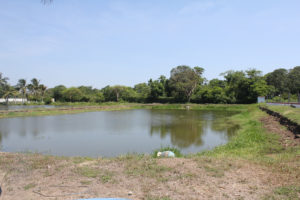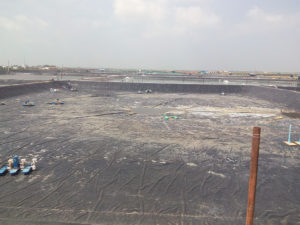
Shrimp farming in Guatemala has gone intensive
Guatemala’s shrimp-farming growth is due to a highly intensive system of small ponds and shorter cycles. Production of close to 25,000 metric tons is expected in 2018.
Poaching has plagued South Africa’s abalone to the point of decimation. Aquaculture is putting the shellfish back in the water, and back on menus.

Guatemala’s shrimp-farming growth is due to a highly intensive system of small ponds and shorter cycles. Production of close to 25,000 metric tons is expected in 2018.

Pond microbial communities are a critical and often overlooked component of aquaculture ecosystems. Bacterial amendments like probiotics provide significant support to shrimp farmers around the world.

Researchers based in California are urging the global aquaculture industry to take proactive measures to protect global food security in the face of climate change.

Shrimp hatcheries are highly dependent on continuous availability of clean water and proper treatment of effluents using sedimentation and biofiltration.

Microalgae – an important live feed in shrimp and fish hatcheries – can be produced in both open and closed systems, with the latter having some advantages.

Prof. Claude Boyd discusses the importance of pH for farmed fish and shellfish, the normal and natural fluctuations and how aquaculture systems can manage it.

Despite the positive outputs of the global salmon farming business it remains a target for sharp criticism. In Scotland, the industry’s battle against misleading and inaccurate information reaches a new level.

The Texas Parks and Wildlife Department’s southern flounder stock enhancement has stocked more than 400,000 fingerlings into Texas bays and estuaries.

Grown for hundreds of years, seaweed (sugar kelp, specifically) is the fruit of a nascent U.S. aquaculture industry supplying chefs, home cooks and inspiring fresh and frozen food products.

For small-scale aquaculture farmers in far-flung regions, creating traceability data can present major challenges, both linguistic and technological. It’s those challenges that VerifiK8 is poised and ready to help solve.

A study evaluated demand feeders on carp production in Nepal. Results showed that use can improve production, productivity and farmers’ livelihoods.

Prof. Claude Boyd on the importance of carbon-nitrogen ratios for pond fertilization and biofloc systems, and the relevance of precise carbohydrate inputs.

Focused on land-use implications of terrestrial meat production, the study concluded that aquaculture can meet the protein demands of a growing global population without adding strain on arable land, water or our other natural resources.

The use of plastic-lined ponds by shrimp farmers can significantly improve production efficiency, support more production cycles per year, and higher mechanical aeration rates and stocking densities. The capital cost of lining ponds can be very significant, so a thorough feasibility analysis is recommended when considering this production tool.

Results of this study demonstrated that a commercial, granular, SCP-based algaecide corresponding to 2.5 mg/L H2O2 can be recommended as an eco-friendly strategy to effectively remove populations of the cyanobacterium Planktothrix sp. without compromising water quality or other plankton communities.